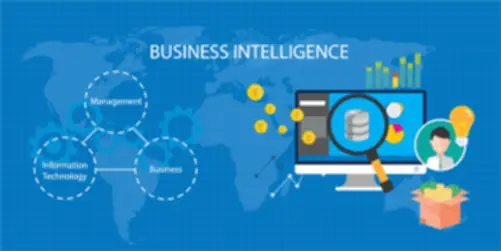In follow the results of one activity can feed the opposite in an iterative process system lifecycle phases. This can include dealing with residual bugs that were not able to be patched before launch or resolving new issues that crop up because of user stories. Larger techniques could require longer maintenance levels in comparability with smaller methods.
What Are The 4 Stages Of The Know-how Life Cycle?

While there are some drawbacks, SDLC has confirmed to be one of the most effective ways for efficiently launching software program merchandise. Mostly used for creating and delivering a extensive range of ideas, this model completely fits the purchasers who don’t have a transparent concept or imaginative and prescient of what their ultimate product ought to appear to be. Prototyping tools, which now provide in depth automation and AI features, significantly streamline this stage.

What’s The System Growth Life Cycle? Phases Of Sdlc
- Key paperwork such as the Project Plan and Software Requirement Specification (SRS) are created.
- The SDLC phases are designed in a means that progressively develops or alters a system throughout its life cycle.
- In conventional project administration, teams typically establish a set plan that does not change.
- They show what the system will seem like, specializing in the person interface.
This skilled can be tasked with developing and employing greatest practices and requirements for project documentation in addition to complete documentation of requirements. Additionally, project managers must additionally carefully evaluate the risks of the project throughout every section and craft contingency plans to mitigate or cut back dangers as a lot as potential. Federal authorities organizations typically handle data systems inside the context of particular packages or tasks, following processes and procedures prescribed of their system improvement life cycle (SDLC) methodologies. A system in the utilization section is often subject to routine operational audits to gauge the continued effectivity and effectiveness of the system and the enterprise processes it supports. Organizations may perform quite lots of IT-specific audits addressing the system general or any of its parts. In the implementation phase, the know-how is deployed in a stay setting.
What Are The 5 Phases Of The System Improvement Life Cycle?
After passing this stage, the software is theoretically ready for market and may be provided to any end-users. During the testing stage, builders will go over their software with a fine-tooth comb, noting any bugs or defects that need to be tracked, mounted, and later retested. The analysis stage includes gathering all the particular particulars required for a new system as well as figuring out the first ideas for prototypes. During the first couple of months, developers would possibly face problems that weren’t detected during initial testing, so they want to immediately react to the reported issues and implement the modifications needed for the software’s secure and convenient usage.
Streamlining It Support Processes With Sensible Tech Tools

Everything requiring person enter or approval must be documented and reviewed by the consumer. The bodily characteristics of the system are specified and a detailed design is prepared. Subsystems recognized during design are used to create a detailed structure of the system. This methodology ought to be used for all DOJ info techniques and purposes. It is applicable across all information expertise (IT) environments (e.g., mainframe, consumer, server) and applies to contractually developed as properly as in-house developed functions. The specific members within the life cycle process, and the mandatory reviews and approvals, range from project to project.
This model is kicked off with a small set of requirements which is then enhanced iteratively with evolving variations until you attain a ultimate product that’s able to be applied and deployed. The SDLC doesn’t necessarily stop once the system is out residing and respiration. In latest years, the Agile software program improvement model has additionally turn into very fashionable. This model prioritizes collaboration and communication amongst project group members, which enables them to remain aligned relating to project expectations and necessities. It also allows groups to assume about and implement changes primarily based on regular suggestions without seriously impacting the project’s schedule, scope or budget. In addition, this model accounts for shifting project necessities, which could not always be obvious at the start of the SDLC but emerge as it progresses.
Includes buying and installing techniques setting; creating and testing databases/preparing check case procedures; making ready take a look at files; coding, compiling, refining programs; performing take a look at readiness evaluate; and procurement activities. Because a software product’s utilization varies from buyer to buyer (each person has totally different needs), there may be unique issues that come up and have to be addressed. Business analysts gather requirements from their prospects, goal market, and industry specialists to create a Business Specification (BS) doc.
Jira is a collaboration tool that helps teams monitor work activities and offers simplified project monitoring and allow seamless project administration throughout both software and enterprise teams, all whereas accommodating each team’s unique working type. Agile is a collaborative, continuous methodology that contrasts sharply with the Waterfall Model. Breaking the project up into smaller parts encourages adaptability and flexibility. Agile strategies corresponding to Scrum and Kanban enable rapid supply of functional software, high change tolerance, and ongoing customer involvement. However, it is much less appropriate for initiatives with strict regulatory requirements because of the need for extra thorough documentation and constant communication and collaboration. Application improvement fashions differ primarily based on app necessities, project dimension, creation cost of purposes, organization size, needs, system complexity, and skill limitation.
The System Development Life Cycle (SDLC), which presents a framework to guarantee projects get carried out in an orderly and efficient method, turns into apparent as a significant tool for managing the complexities of software improvement. App growth planning also entails describing and documenting requirements like frequency of knowledge backup, efficiency objectives, failure prevention and fault evaluation, app usability, portability, accessibility, safety, and recoverability. It’s an incremental application growth process that establishes the app’s feasibility and provides the group flexibility. An SDLC serves as a roadmap for developers and project managers, guiding them to deliver high-quality, robust software that meets user expectations and is delivered on time and inside budget. There are 7 software program development life cycle phases, and they are to be approached sequentially, although in some circumstances, two might run concurrently (just as improvement and testing).
Each repetition of an iterative improvement model provides material (code) to the rising software base, by which the expanded code base is examined, reworked as necessary, and demonstrated to satisfy the requirements for the baseline. Other steps that usually seem within the SDLC include project initiation, functional specs, detailed specs, analysis and end-of-life planning. The variety of steps involved in any given SDLC range depending on the project measurement, timeline or complexity.
Once the project begins, you should monitor the project and management for any deviations from the plan. Finally, closure includes wrapping up duties, acquiring project acceptance, and archiving information. As customers work together with the app, they supply priceless suggestions that allows developers to update options and improve person satisfaction and retention.
All Project Managers and growth teams concerned in system development initiatives characterize the first audience for the DJ SDLC, model 2.0. It ought to be used at the aspect of existing policy and tips for acquisition and procurement, as these areas are not discussed within the SDLC. The DOJ spends hundreds of thousands of dollars annually on the acquisition, design, development, implementation, and upkeep of knowledge methods vital to mission packages and administrative capabilities. There can be a need to make sure privateness and security when developing data methods, to ascertain uniform privacy and protection practices, and to develop acceptable implementation methods for these practices.
If the team is creating for a customer as an alternative of to market, the project manager meets with them to debate the product, its function, and the results they want to obtain. SDLC “works” when your team organizes and executes based on this sequence; how they sort out each individual step will rely upon the framework they selected (more on that later.) For now, let’s define what happens in each stage/phase. Software Development Life Cycle (SDLC) is the process by which software program involves life.
In this phase, all the documentation that the staff created within the evaluation phase is used to develop the actual technical documentation of the project. It’s very common for the project teams to make use of UML diagrams within the design part to design the system’s architecture. Setting a strong basis and defining a clear understanding of a project is essential to the success of any info system. For this purpose, the SDLCs first phase is planning the place stakeholders and all events involved in the project take part to clearly define necessities and the character of what the data system will need to remedy. Systems analysis and design (SAD) may be thought of a meta-development activity, which serves to set the stage and certain the problem.
Even so, some estimate is normally higher than no estimate in any respect, as a result of it helps with the planning of different elements of the project, including scope and sources. The System Development Life Cycle (SDLC) offers a well-structured framework that offers an concept, of the means to construct a system. It consists of steps as follows – Plan, Analyze, Design, Develop, Test, Implement and Maintain. The Coding part in the Software Development Life Cycle (SDLC) is when engineers and developers get down to enterprise and begin changing the software design into tangible code.
Transform Your Business With AI Software Development Solutions https://www.globalcloudteam.com/
